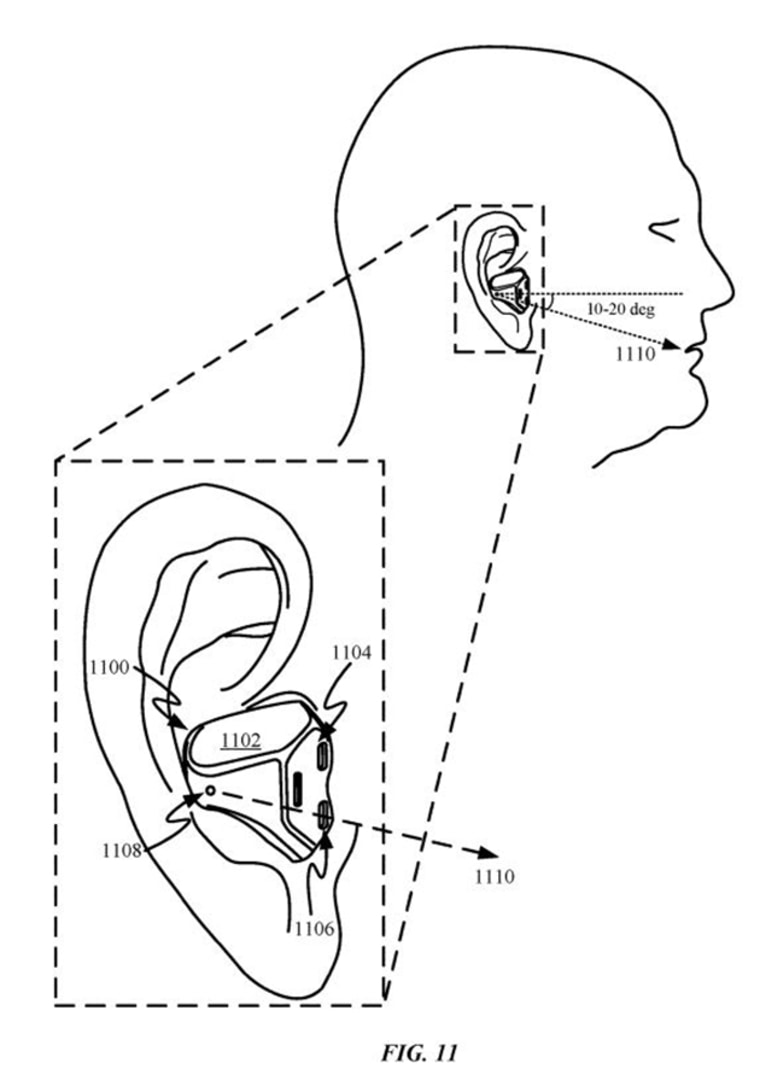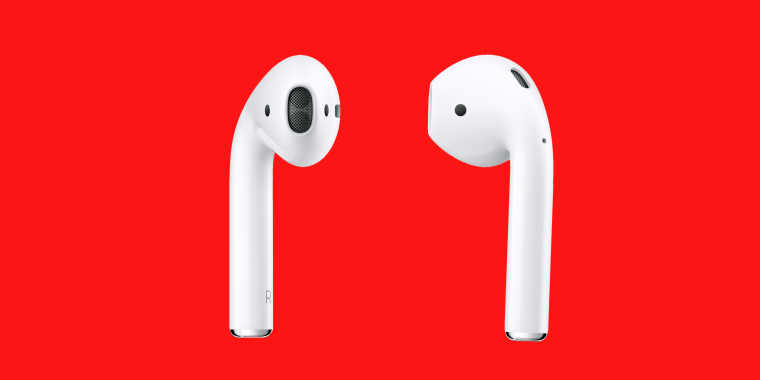Nearly two decades after Apple turned a thin white wire into a cultural phenomenon, its wireless earbuds — AirPods — have emerged as the company’s newest social signifier.
Or, as people on the internet might call it, a “flex.”
After an inauspicious start, AirPods have emerged in recent months as a potent piece of pop culture and yet another success for Apple, albeit one with particularly good timing. Apple has struggled recently to convince investors that its best days are ahead as iPhone growth has slowed, sowing doubt that the company has any more tricks up its turtlenecked sleeves.
The buds were released in September 2016 to a tepid public response and derision about their aesthetics — the small white stems hanging off of people’s ears reminded some of the tips of electric toothbrushes.
But the buds gained a bit of traction with each successive holiday season until 2018, when Apple analyst Neil Cybart noticed a steep spike in Google searches. At the same time, he also saw what was happening online. AirPods were becoming something of a meme.
“They had essentially gone viral,” said Cybart, founder of Above Avalon, a website focused on Apple analysis.
Cybart created the following chart, highlighting how search interest in AirPods has grown significantly.

Although AirPods have been lauded and memed, Cybart attributes their overall success to a mix of aesthetics, wire-free design and their emergence as a social signal of affluence. A tongue-in-cheek meme asks “what’s the bigger flex?” between AirPods and any number of bizarre options. (A flex is to boast or show off.)
Apple is well aware of this development, with CEO Tim Cook recently telling shareholders that AirPods have become a “cultural phenomenon.”
Seen and heard
In recent years, audio hardware has merged technological functionality with fashion. Beats by Dre, which was founded in 2006 and bought by Apple in 2014 for $3 billion, became one of the first brands of the Instagram-era meant to be seen by others as much as heard by users, leading to any number of copycats.
AirPods, on the other hand, have a unique duality on the internet. They are a status statement — one pair of the AirPods sell for $159, and Apple sold an estimated 9 million pairs of them during the 2018 holiday period, according to Cybart (Apple does not breakout AirPod sales in its earning releases) — but they’re also the butt of internet jokes.
Beth DuFault, assistant professor of consumer behavior and marketing at the University at Albany, State University of New York, said that the AirPod’s functionality and mockability are key factors in its success.
“For innovations to be cool and accepted, they have to be familiar enough to be acceptable but new enough to be unique,” DuFault said. “It does look like the disposable part of a toothbrush, but at the same time that’s very distinctive.”
The distinctiveness echoes Apple’s ad campaign from the mid-2000s that featured the white wired earbuds that came with the company’s new MP3 player, the iPod.
Although knock-off AirPods are plentiful, DuFault said the real version’s distinctive look makes it recognizable at a glance and signifies that the wearer has the latest technology.
“You have to see other people using it,” she said. “With AirPods, you see other people, and cords actually look passé now.”
AirPods have spurred no shortage of admirers in the tech industry, with many hardware companies offering similar wireless earbuds that rest in a case that also acts as a charger.
Wearables rising
The cultural cache of AirPods provides Apple with yet another example of its ability to set cultural trends, but analysts said they also see the product as an important addition to Apple’s entry into the growing segment of wearables, a segment that includes Apple Watch, which can track personal and health information.
Gene Munster, a longtime Apple analyst and founder of the venture capital firm Loup Ventures, said Apple has a variety of options to push the development of AirPods to possibly even include health readings from the inner ear, a feature that would dovetail with the Apple Watch.
“We see the product as part of a bigger picture around their wearable strategy,” Munster said. “I think wher they’re ultimately going is adding more biomarkers on there.”
And as the product’s popularity rises, tech blogs and avid Apple consumers have already begun to speculate about when the company will release the next generation of AirPods.

On Twitter, users are already plotting out their flexes once the AirPods 2 are released.
Munster noted that Apple filed a patent in December for wireless earbuds that could include biometric sensors to be used with the Apple Watch.
Cybart said he also sees wearables, like AirPods and the Apple Watch, as a major growth area for Apple.
“If you project this out for another year or two, the numbers are going to start mattering,” Cybart said.
Jason Abbruzzese contributed reporting.

